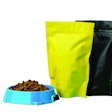Karen Wedekind, PhD, a researcher in pet nutrition with Novus Nutrition Brands, has made it a cause of sorts to educate our industry about the importance of balanced pet diets and avoiding excesses of nutrients such as minerals, protein and others (download a webinar on the topic).
Whether you agree with Dr. Wedekind’s analysis, most industry professionals would concede that many pets, especially in developed markets, are receiving too much food overall. According to the fifth annual survey of veterinarians by the Association for Pet Obesity and Prevention (APOP), 54% of US pets—a total of 88.4 million cats and dogs—are overweight or obese.
Even worse, these pets’ owners are ignorant or in denial about the problem. “The most distressing finding in this year’s study was the fact that more pet owners are unaware their pets are overweight,” says Ernie Ward, DVM, APOP’s founder, adding that 22% of dog owners and 15% of cat owners characterized their pets as normal weight when the animals are actually overweight or obese. “This is what I refer to as the ‘fat pet gap',” he says. “In simplest terms, we’ve made fat pets the new normal.”
Further, APOP reports, the number of obese pets—meaning they are at least 30% above normal weight or have a body condition score of 5—continues to grow despite 93.4% of surveyed pet owners identifying pet obesity as a problem. In 2011, 24.5% of US cats and 21.4% of dogs were classified as obese by their veterinarians, up from 21.6% and 20.6%, respectively, in 2010.
“No animal goes to the refrigerator or pantry and helps themselves,” says Steve Budsberg, DVM, APOP board member and director of clinical research at the University of Georgia College of Veterinary Medicine. Dr. Ward agrees, characterizing pet obesity as a “people problem, not a pet problem.”
Another APOP board member, Joe Bartges, DVM, PhD, of the University of Tennessee College of Veterinary Medicine, adds that a major challenge is convincing pet owners of what overweight and obesity mean and look like in pets. “Veterinary health teams must educate owners and work with them to prevent and treat obesity.”
Therein might lie part of the problem, especially for cats. Only 49% of surveyed cat owners said their veterinarians had discussed obesity and excess weight with them, compared to 72% of dog owners, APOP reports, and only 46% of cat owners stated their veterinarians had reviewed nutrition or food choices, compared to 86% of dog owners. (I can verify that: Though my veterinary clinic is generally top-notch, I have received little useful advice on slimming down my overweight cat; I usually have to broach the topic.)
Where does our industry fit in? I think it could help with pet owner and veterinarian education, starting with including calorie content information on petfood labels, websites and other information sources. The Association of American Feed Control Officials is moving closer to mandating that the information appear on packaging and may be voting on the matter at its annual meeting in August.
Also, providing clear feeding directions and amounts that pet owners can easily understand and use would help, as would including a cup or scoop marked with measurements. Research has shown that the size of dog food bowls and scoops has an effect on how much owners feed and overfeed.
I don’t believe petfood manufacturers are any more responsible for pet obesity than human food manufacturers are for obesity in people. I do believe both types of manufacturers can play a role in solving the obesity problem by being transparent about what exactly is in their products—including the amount of calories and levels of nutrients—and helping consumers make informed decisions.


















